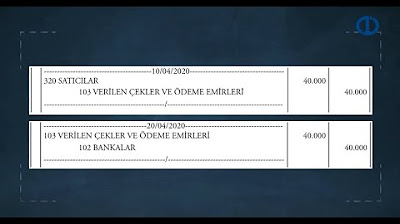Aset? Ada yang Lancar, Ada yang Enggak Lho!! | #akuntansi #akuntansidasar
Summary
TLDRThis video script discusses the classification of assets in accounting, distinguishing between current assets, which are liquid and can be converted to cash within a year, and non-current assets, which are less liquid and have a longer-term value. It covers various types of current assets like cash, short-term investments, accounts receivable, inventory, and prepaid expenses. The script also explains non-current assets, including fixed assets like land, buildings, and equipment, long-term investments, and intangible assets such as goodwill, patents, copyrights, and trademarks. It touches on depreciation and amortization, which reduce the value of these assets over time.
Takeaways
- 📚 The video explains two classifications of assets: current assets (short-term) and non-current assets (long-term).
- 💧 The main difference between current and non-current assets lies in liquidity, with current assets being more liquid (convertible to cash in less than a year).
- 💵 Examples of current assets include cash, short-term investments, accounts receivable, inventory, and supplies.
- 🏠 Non-current assets are less liquid and include fixed assets such as land, buildings, equipment, and long-term investments.
- 🏭 Fixed assets like land, buildings, and machinery experience depreciation over time, except land, which appreciates due to scarcity.
- 🎨 Intangible assets include goodwill, patents, copyrights, and trademarks, which hold value but are not physical in nature.
- 📉 Depreciation reduces the value of fixed assets over time, while land appreciates due to increasing demand.
- 💼 Goodwill represents the excess value of a company in the market, often identified during mergers or acquisitions.
- 🛠 Supplies differ from inventory in that they are used internally for company operations, while inventory is sold to customers.
- 📜 Intangible assets can also undergo amortization, similar to how physical assets depreciate, reducing their book value over time.
Q & A
What are the two main classifications of assets in accounting?
-Assets are classified into two main categories: current assets and non-current assets. Current assets are considered short-term and more liquid, while non-current assets are long-term and less liquid.
What is the main difference between current and non-current assets?
-The main difference lies in liquidity. Current assets can be quickly converted into cash (typically within one year), while non-current assets take longer to convert into cash, often over a period longer than one year.
What are some examples of current assets?
-Examples of current assets include cash, short-term investments, accounts receivable, inventory, and supplies.
How do accounts receivable differ from notes receivable?
-Accounts receivable refer to debts owed to the company without formal documentation, while notes receivable are debts with written agreements, such as contracts.
What is the difference between inventory and supplies?
-Inventory consists of goods intended for sale to customers, while supplies are items used for the company's internal operations, like office materials.
What are prepaid expenses and how are they classified?
-Prepaid expenses are payments made in advance for services or benefits to be received in the future, such as insurance, rent, or advertising. These are classified as current assets.
What are some examples of non-current assets?
-Examples of non-current assets include fixed assets like land, buildings, equipment, long-term investments, and intangible assets such as goodwill, patents, and trademarks.
Why doesn't land experience depreciation?
-Land doesn’t experience depreciation because it is a limited resource that tends to increase in value over time due to scarcity, unlike buildings or equipment, which depreciate due to wear and tear.
What is goodwill, and how is it recognized in accounting?
-Goodwill is the value attributed to a company's brand, reputation, or other intangible factors. It is recognized when the market value of a company exceeds the value of its physical assets, typically during acquisitions or mergers.
How is depreciation treated for fixed assets, and what is its purpose?
-Depreciation is the process of allocating the cost of a fixed asset over its useful life due to wear and tear or obsolescence. Its purpose is to reflect the decrease in value of an asset over time and is recorded as an expense in the financial statements.
Outlines

Dieser Bereich ist nur für Premium-Benutzer verfügbar. Bitte führen Sie ein Upgrade durch, um auf diesen Abschnitt zuzugreifen.
Upgrade durchführenMindmap

Dieser Bereich ist nur für Premium-Benutzer verfügbar. Bitte führen Sie ein Upgrade durch, um auf diesen Abschnitt zuzugreifen.
Upgrade durchführenKeywords

Dieser Bereich ist nur für Premium-Benutzer verfügbar. Bitte führen Sie ein Upgrade durch, um auf diesen Abschnitt zuzugreifen.
Upgrade durchführenHighlights

Dieser Bereich ist nur für Premium-Benutzer verfügbar. Bitte führen Sie ein Upgrade durch, um auf diesen Abschnitt zuzugreifen.
Upgrade durchführenTranscripts

Dieser Bereich ist nur für Premium-Benutzer verfügbar. Bitte führen Sie ein Upgrade durch, um auf diesen Abschnitt zuzugreifen.
Upgrade durchführen5.0 / 5 (0 votes)






